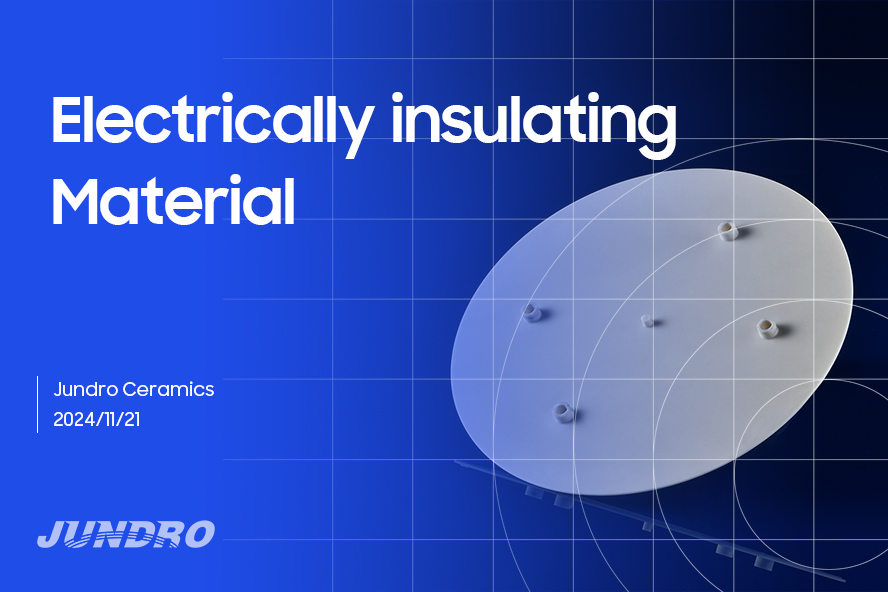
Can Aluminum Nitride Ceramics Replace Traditional Insulators?
As technology advances, industries constantly seek better materials to improve performance, efficiency, and reliability. Aluminum nitride (AlN) ceramics, with their impressive thermal and electrical properties, have gained significant attention as potential replacements for traditional insulating materials. But are they ready to fully replace established options like alumina, mica, and polymers? This article takes a deep dive into the advantages and challenges of AlN ceramics, comparing them to existing insulators and exploring their potential across industries.
The Unique Properties of Aluminum Nitride Ceramics
AlN ceramics stand out due to their exceptional combination of thermal conductivity, electrical insulation, and durability. These properties make them particularly appealing for applications where high performance is critical. Below is a comparison of AlN with commonly used insulating materials:
| Property | Aluminum Nitride (AlN) | Alumina (Al₂O₃) | Mica | Polymer Insulators |
Thermal Conductivity | 140–180 W/m·K | 20–30 W/m·K | ~0.7 W/m·K | <1 W/m·K |
Electrical Resistivity | >10¹² Ω·cm | >10¹⁴ Ω·cm | High | Moderate to High |
Dielectric Strength | ~15–20 kV/mm | ~8–12 kV/mm | ~8–15 kV/mm | ~10–25 kV/mm |
Maximum Operating Temp. | ~1000°C | ~1500°C | ~500°C | ~200°C |
Thermal Expansion Coeff. | 4.5×10⁻⁶/K | 8.1×10⁻⁶/K | ~6×10⁻⁶/K | Varies (~50×10⁻⁶/K) |
Mechanical Strength | High | Very High | Moderate | Low |
Machinability | Moderate | Low | High | High |
These figures clearly show the competitive edge of AlN ceramics in terms of thermal conductivity and thermal expansion, both of which are critical for applications where heat management and dimensional stability are key.
Why Consider Replacing Traditional Insulators?
Traditional insulators, like alumina, mica, and polymers, have served industries well for decades. However, as performance requirements increase, they face limitations:
Alumina offers excellent mechanical strength but lacks the thermal conductivity needed for high-power applications.
Mica is lightweight and easy to machine but has poor heat dissipation and lower thermal stability.
Polymers are cost-effective and versatile but degrade quickly under high temperatures and exhibit low thermal conductivity.
In contrast, aluminum nitride ceramics combine the best features of these materials while addressing their weaknesses.
Advantages of Aluminum Nitride Ceramics
1. Thermal Performance
Aluminum nitride ceramics are among the best thermal conductors in the insulating material category, with values reaching 140–180 W/m·K. This makes them ideal for applications like power electronics and LED substrates, where heat dissipation is critical to performance and longevity.
2. Electrical Insulation
With electrical resistivity exceeding 10¹² Ω·cm, AlN ceramics provide excellent insulation for high-frequency and high-voltage applications. This makes them a preferred choice for cutting-edge technologies in telecommunications and semiconductors.
3. High Temperature Resistance
AlN ceramics can endure temperatures up to 1000°C without significant degradation, outperforming polymers and mica in high-temperature environments.
4. Low Thermal Expansion
Their low thermal expansion coefficient ensures dimensional stability even during rapid temperature changes, reducing the risk of cracking or warping.
5. Eco-Friendliness
AlN ceramics are non-toxic and produce no harmful emissions during use, aligning with the growing demand for environmentally sustainable materials.
Challenges and Limitations
1. Cost
One of the most significant barriers to widespread adoption is cost. Manufacturing AlN ceramics involves advanced techniques and high-purity raw materials, making them more expensive than traditional options.
2. Machining Complexity
Aluminum nitride ceramics are brittle compared to polymers and metals, requiring specialized equipment and techniques like diamond tooling for machining, which adds to production costs.
3. Availability
Unlike alumina or polymers, AlN ceramics are not as widely available, potentially leading to supply chain challenges in large-scale applications.
4. Processing Sensitivity
Precise control over sintering conditions and additive selection is crucial to avoid defects such as cracking or porosity, which can compromise performance.
Applications: Where AlN Ceramics Shine
1. Electronics
In power electronics and semiconductors, AlN ceramics serve as substrates that dissipate heat while providing excellent electrical insulation. This dual function is critical for components like transistors, diodes, and LED modules.
2. Aerospace
The aerospace industry values materials that can handle extreme temperatures and harsh environments. AlN ceramics are used in sensors, insulators, and components for high-temperature systems like jet engines.
3. Medical Devices
AlN ceramics are increasingly used in medical imaging systems and diagnostic equipment, where precise thermal and electrical properties are essential.
4. Renewable Energy
As renewable energy systems grow, so does the need for durable, efficient materials. AlN ceramics are ideal for use in wind turbines, solar inverters, and energy storage systems.
Transitioning from traditional insulators to AlN ceramics is not a simple decision. Manufacturers must weigh the higher upfront costs against the potential long-term benefits:
Initial Costs: AlN ceramics are more expensive to produce and process. However, their durability and superior performance can offset these costs over time.
We understand that each industry's application has unique requirements, so we offer a wide range of customization options for aluminum nitride ceramics to ensure compatibility with your project. If you need AlN ceramics as your preferred material for engineering, please contact our experts and we are happy to provide you with professional services
Dongguan Jundro ceramics Technology Co.,Ltd
E-mail:info@jundro.com
Tel:+86-769-82913501
Fax:+86-769-82913801
Add: Room 306, Gate B, Unit 1, Block 2 South, No. 1 Yile Road, Songshan Lake, Dongguan City, Guangdong Province, China(523808)
© August Dongguan Jundro ceramics Technology Co.,Ltd- 2023